
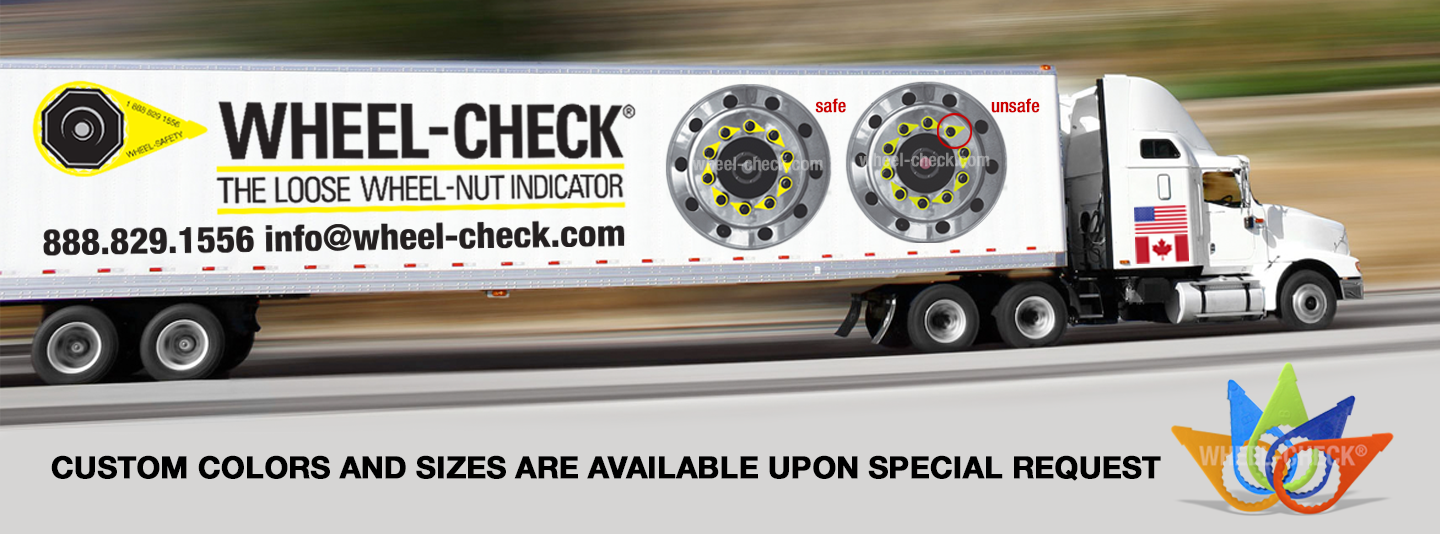
WHEELS: MAKE SURE THINGS MATCH
RoadStar, August 1999
Every time you do a circle check, inspect every wheel for damage. You’re looking for cracks in the structure of the wheel, rust streaks away from the lugnuts or broken and missing studs.
If a stud is broken, replace it as soon as possible and preferably before leaving the terminal or truckstop if you can. But don’t skimp on the repair. The correct procedure is to replace the studs on either side of the broken one at the same time. The loading on the remaining studs may well have exceeded their design limit, and a catastrophic failure with the loss of a wheel could result. Wheels are two basic different types these days, the older Budd-type that are stud-located and hub-piloted wheels.
Stud-located wheels are identified by their inner and outer cap nuts on dual pairs, with left- and right-hand threads on either side of the truck or trailer.
If the wheels are stud-located with a ball nut in a seat on the wheel, try to ensure all studs and inner and outer cap nuts are Grade 8. And be careful of counterfeit hardware. If you are looking for Grade 8 ball and seat nuts, there’s a Euclid E-5977-L/R for left or right thread.
Hub-piloted wheels are increasingly common now, but there are still many older trucks and especially trailers running around on the stud-piloted wheels with the ball-seat nuts.
The wheels may be the same size and have the same number of stud holes, but they are definitely not interchangeable, either on the hubs or in the use of hardware.
The hub-piloted wheel is located on lands carefully machined out of lugs cast into the hub.
These machined lands center the wheel, and flat-faced lug nuts with integral washers clamp the wheel to the hub face. When mounting hub-piloted wheels, try to “hang” the wheel from one of the machined lands located at the 12 o’clock position. This will more closely center the wheel for optimum balance and minimum runout.
The older-style wheel uses the spherical seat and matching radius on the nut to locate the wheel, as well as to clamp it to the hub.
Do not mix the two systems even in an emergency. In neither case will the hardware clamp the other type of wheel adequately to the hub face if the wrong hardware is used. Studs can break, wheels move and the whole assembly may separate with potentially disastrous results.
Know what you are dealing with by looking at the pilot hole and the stud holes in the wheels if you are in any doubt.
During the walkaround or in a more detailed inspection, any streaks or cracks you may find in truck wheels signify a problem. Knowing how to read the cracks can tell you about the problem.
First streaks: These rusty marks coming radially away from a lugnut indicate a loose fastener. The answer is to get a torque wrench on to it immediately. Step 2 is to try and think of reasons why the lug nut might have loosened.
Cracks that run from stud hole to stud hole arise when a wheel is loose or incorrectly torqued. A regular maintenance program that includes checking lugnuts with a torque-wrench should go a long way to eliminating this cracking. But include regular removal of the wheels to clean the mating faces and then torquing down the lug nuts.
Cracks that run from stud hole to hand-hole, hand-hole to rim or hand-hole to hand-hole are caused by overloading. The cure for this should be obvious.
Cracks that run around the disc nave indicate a bad fit-up, or a damaged hub that is placing alternating stresses into the wheel center. They can also indicate overload. When servicing the wheelends with the wheels off, clean any rust from the mating wheel and hub surfaces.
Check the hub for distress and ensure there’s no damage at the stud holes or wear on the wheel mounting face. And never weld a damaged hub. If it’s a bad hub, replacement is in order.
Cracks in the rim base are probably the result of poor handling during tire mounting, where deep tool marks have produced stress-risers in the rim. The cycling of the metal with each revolution of the wheel leads to these fatigue cracks. However, these cracks can also be caused by overloading and overinflating tires or using larger-than-recommended tires for the rim to compensate.
Forged aluminum wheels — besides looking more attractive — deal much better with overload, poor handling and stress. But don’t be tempted to switch from a steel front wheel to an aluminum one without checking the length of the studs. Make sure the lug nuts have sufficient thread overlap to bear the clamp load. Stud threads should project above the nut at least a third of the height of the nut for adequate clamping.
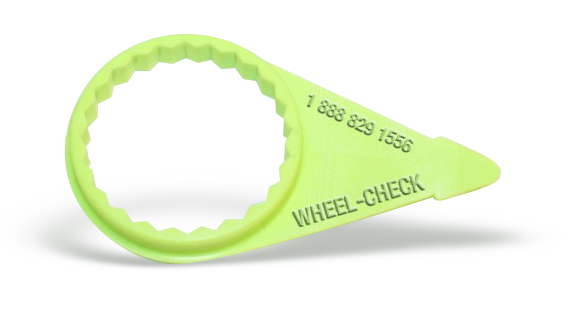
WHEEL-CHECK®: High visibility loose wheel-nut indicator
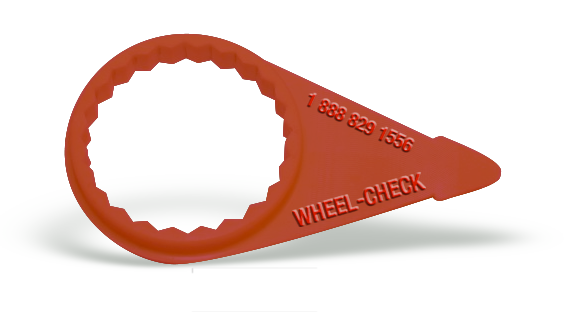
WHEEL-TORQUE: Red torque indicator used to mark a nut has backed off, and maintenance is aware of the problem
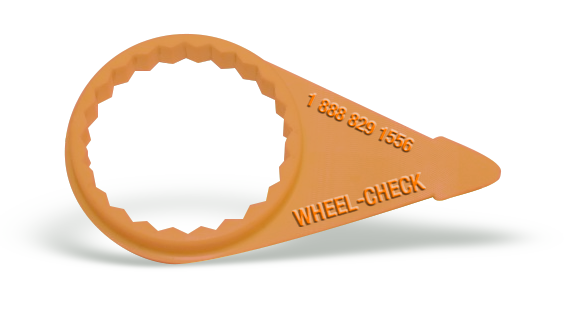
WHEEL-CHECK®, HIGH TEMPERATURE: Loose wheel-nut indicator that withstands higher temperatures
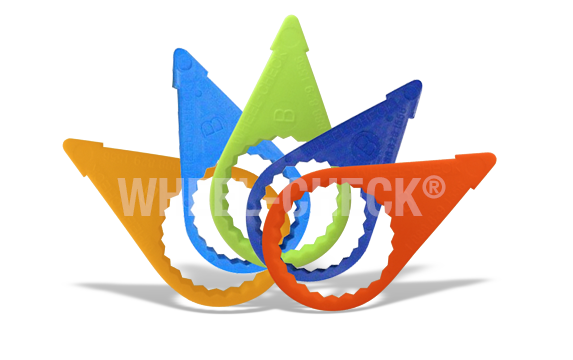
WHEEL-CHECK®, CUSTOM COLORS: Custom colors and sizes are available upon special request.
© All Rights Reserved. WHEEL-CHECK®, THE LOOSE WHEEL-NUT INDICATOR. "25 years helping roads to be safer."
*The use of Wheel-Check® in no way guarantees wheel-offs will NOT occur.